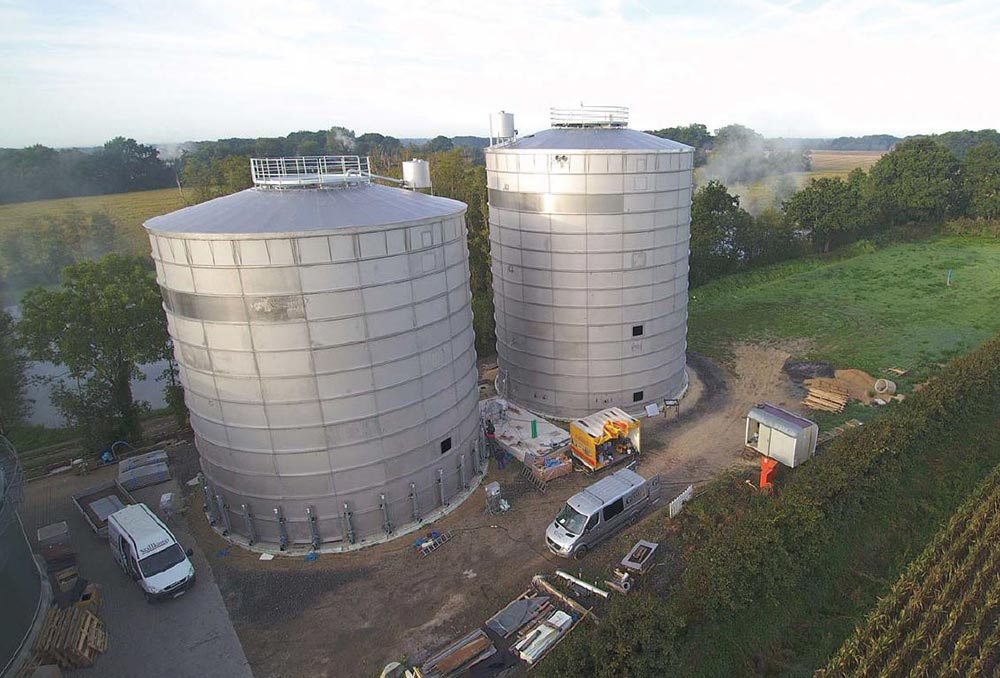
Continuously stirred tank reactor in stainless steel during construction.
According to a recent report by German Biomass Research Institute DBFZ, all the preconditions required to develop a biogas industry can already be found in West India. For some inside information Stainless Steel World contacted Erich Stallkamp ESTA GmbH, one of the world’s leading companies for biogas components.
By David Sear
The basic functioning of a biogas plant can be simply described. Take organic waste, such as animal manure, vegetable waste and other energetic material e.g. corn, put it inside a closed container and allow it to undergo anaerobic digestion. The digestion process uses microbes to break down such organic matter, producing methane (biogas). This gas is captured and can subsequently be used just like natural gas to heat homes, to produce electricity, etc. Almost any matter that remains following anaerobic digestion can be converted into biofertiliser to be spread directly onto fields.
No wonder then that biogas plants have become a regular feature of the rural landscape in many countries in Europe, where they are used to convert waste from the farming sectors, food processing industries and corn into valuable energy. And now Europe and especially Germany can take over a leading role in promoting the further use of biogas technology worldwide. This was the clear message that comes from Stefan Wichelmann, Business Development Manager.
“According to the DBFZ India has strong targets for renewable power sources, such as 10,000 MW by 2022 made from biopower. The state-specific targets show that Uttar Pradesh (North India) and Maharashtra (West India) will take over a leading role in biopower.


